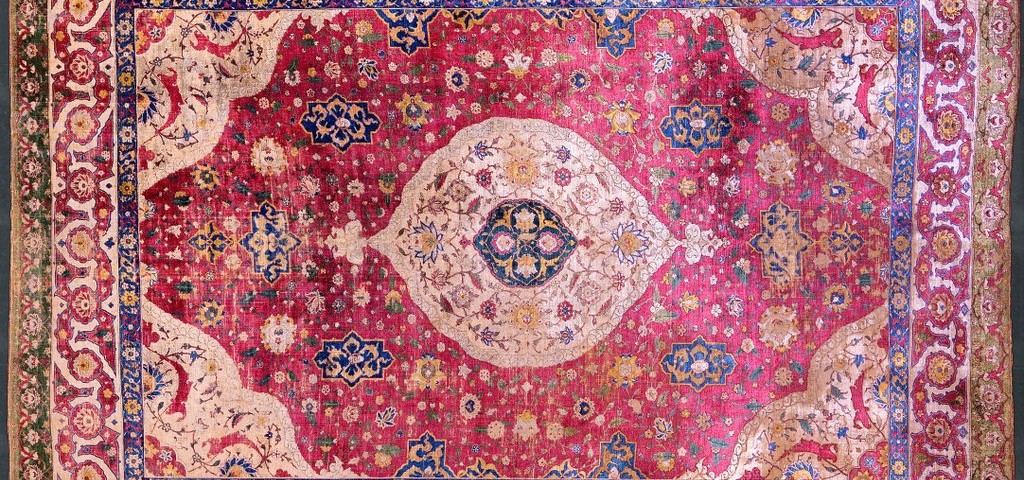Iranian Carpets Ready to Reclaim World Market Share
 US Customs and Border Protection lifted a ban on the import of Iranian carpets as of January 21, reopening a huge market to Iran’s exporters.Yet there are challenges to overcome before the US market can be conquered again, as it has gone through drastic changes in the absence of Iranian rugs.
US Customs and Border Protection lifted a ban on the import of Iranian carpets as of January 21, reopening a huge market to Iran’s exporters.Yet there are challenges to overcome before the US market can be conquered again, as it has gone through drastic changes in the absence of Iranian rugs.
Hamid Kargar, the head of Iran’s National Carpet Center, says the United States is “not an untapped and accessible market” for Iran’s hand-woven carpet.
“During the years that the US had closed its gates on Iran’s hand-woven carpets, rivals stepped in and increased their share of the market,” he wrote in an article for the Persian weekly Tejarat-e-Farda.
As part of an act ratified in September 2010, the United States, the biggest buyer of Iranian hand-woven carpets, imposed a ban on their imports among other products.
Before imposing direct sanctions on imports from Iran, the US imported more than $82 million worth of Iranian carpets every year, accounting for 16.5% of Iran’s total annual carpet exports.
Consequently, Iran lost the market to countries such as India and Pakistan.
“India, as our main rival in the US, shipped $80 million worth of carpets to the country the year after the sanctions went into effect,” Kargar says.
To make a successful comeback, Kargar believes Iranian exporters should consider smart and targeted advertising.
The government could also play a role to that end. Seyyed Morteza Araqchi, deputy head of Iranian Hand-Woven Carpet Exporters Union, said the government should provide exporters with incentives to lower the prices of Iranian carpets shipped abroad.
That, he said, would provide a competitive edge to Iranian products, which are already unrivaled in international markets in terms of quality.
What makes Iranian carpet unique, Araqchi noted, is that it has deep roots in history.
“The rival countries’ products are simply copies of Iranian carpets,” he said.
Iran is home to one million carpet weavers, of whom 289,000 are active in Isfahan Province. More than 1,000 tons of hand-woven carpets worth $21 million were exported from Isfahan in the last Iranian year (ended March 20, 2015).
According to Kargar, Isfahan’s handmade rug exports during the period registered an 8% increase compared to the previous year, which was “the worst year” in the past decade in terms of exports.
On average, Iran used to export $500 million worth of hand-woven carpets annually until two years ago when the exports dropped to $314 million due largely to sanctions.
Nonetheless, Persian rugs are still frontrunners in the global market.
The official noted that even today Iran’s share of global carpet market is more than 30%, placing the country head and shoulders above rivals like India, Pakistan, China and Turkey.
“We don’t expect the American market to do wonders and push up the numbers of Iranian exports considerably … However, the removal of sanctions on Iran’s nuclear program, in general, could raise hopes that exports to other countries could also increase,” he said.
Aside from the United States, Iran is also expecting a rise in exports to countries that have recently joined its export destinations.
European countries, especially Germany, some Arab states like Lebanon along with the United States are considered traditional buyers of Iranian hand-woven carpet.
On the other hand, China, Russia, South Africa and Brazil, among some other countries, have started importing since only a few years ago. Exports to these markets have also been on the rise.
Sanctions aside, a number of other issues have also hindered carpet exports in the past few years.
High inflation, hike in raw material prices and transportation costs, saturation of traditional carpet markets and a shift in customer taste, according to Kargar, are among those issues, which need to be addressed as soon as possible.







